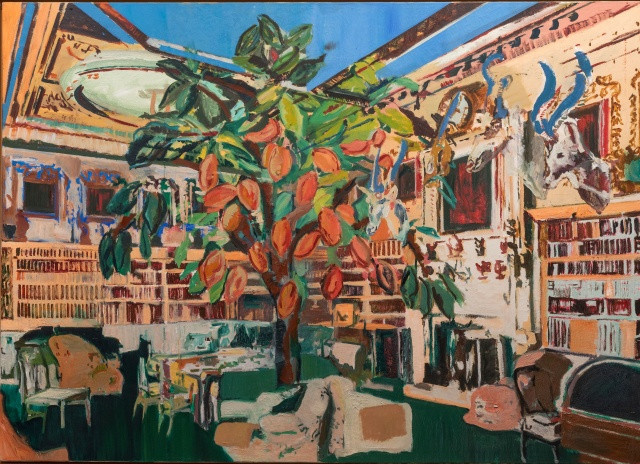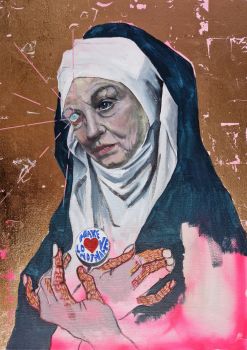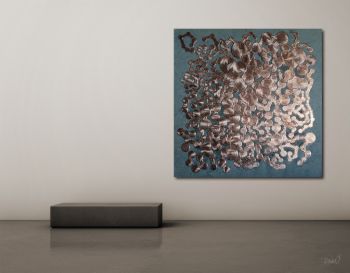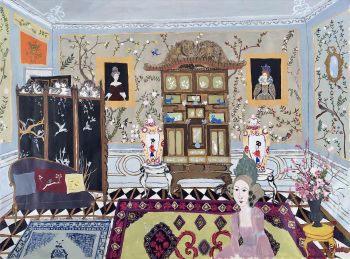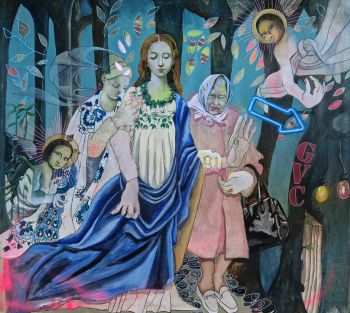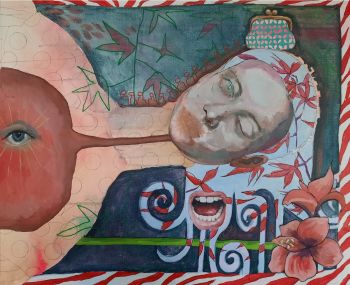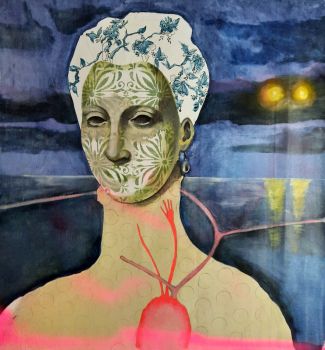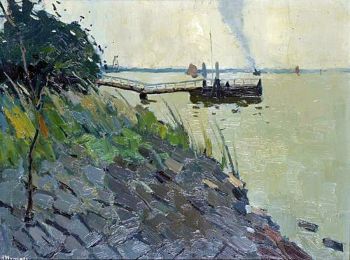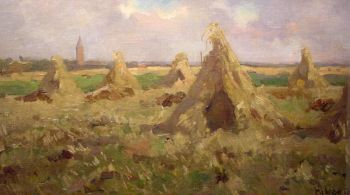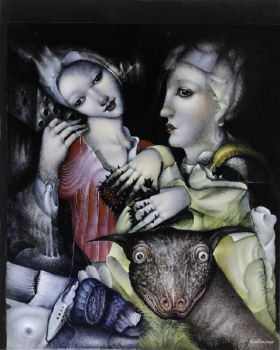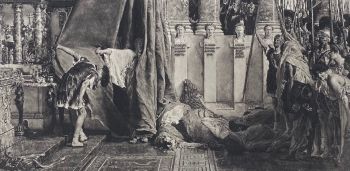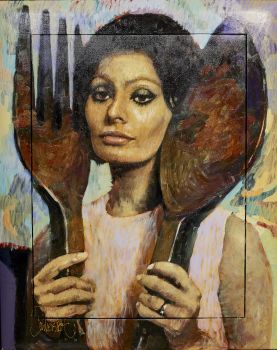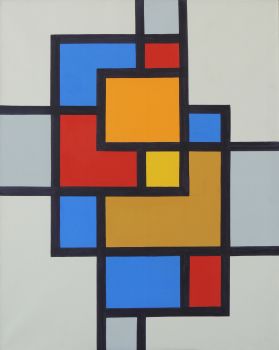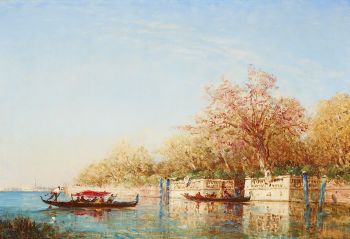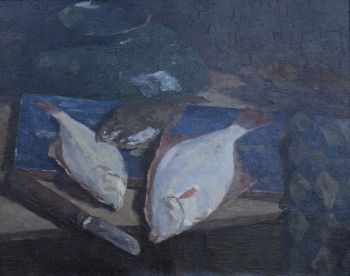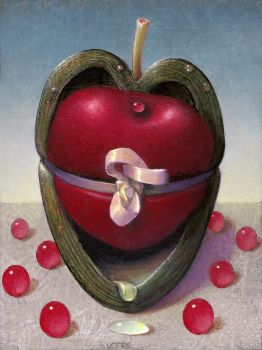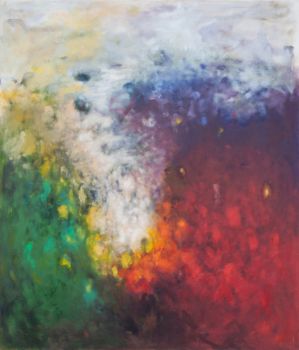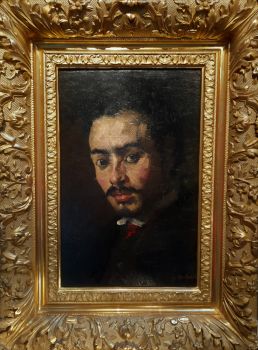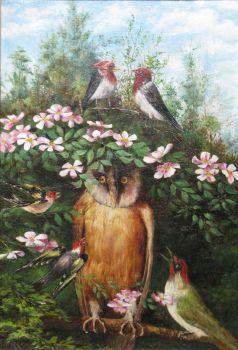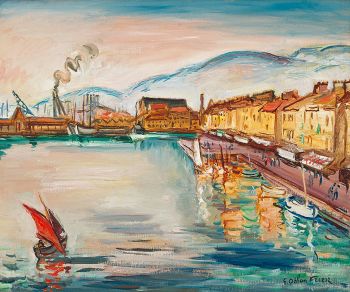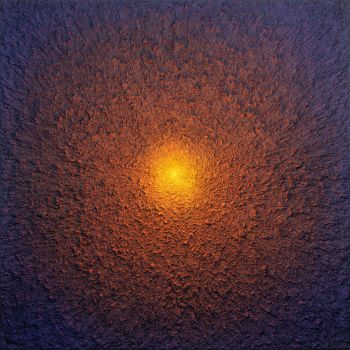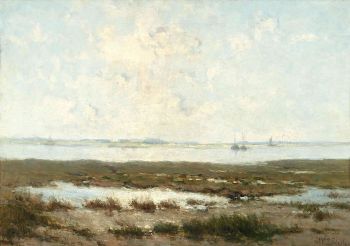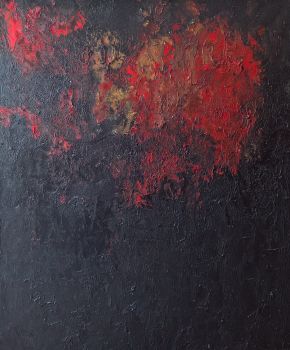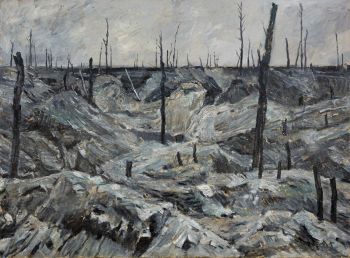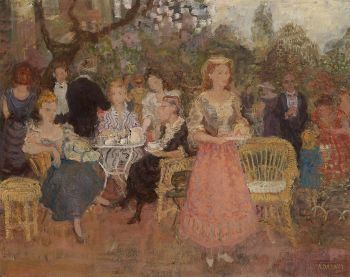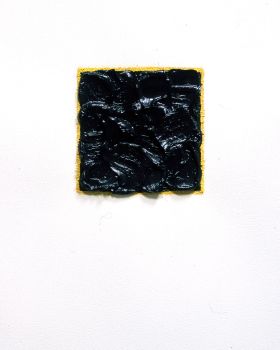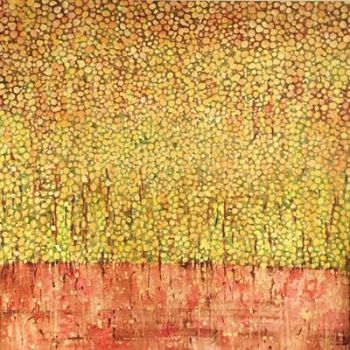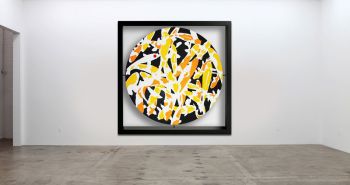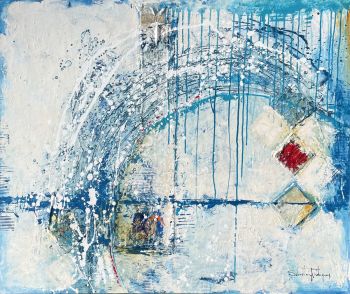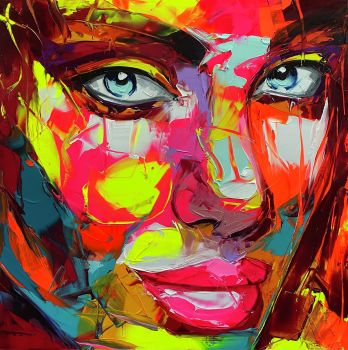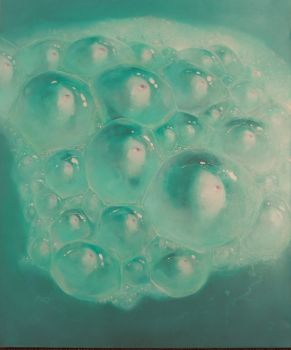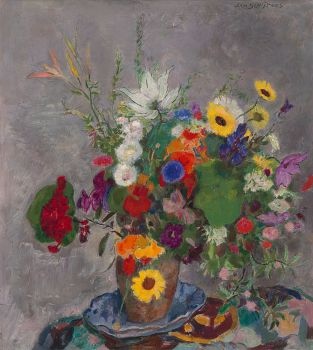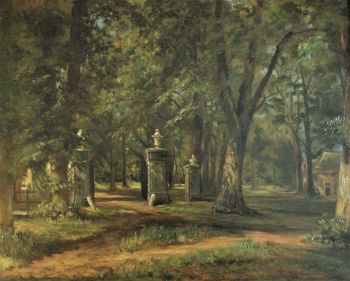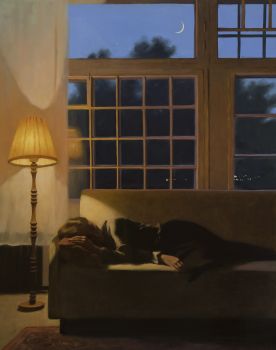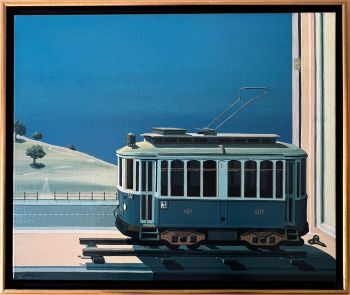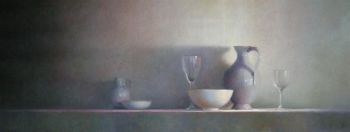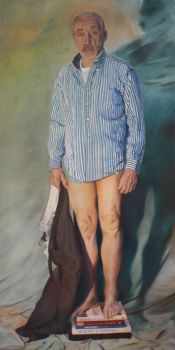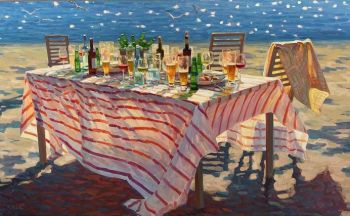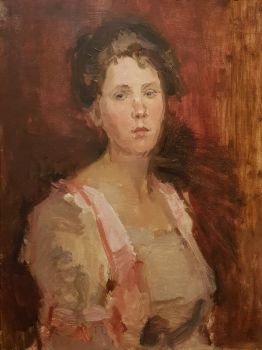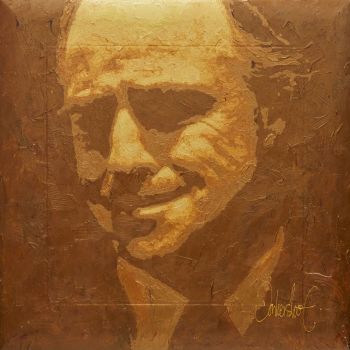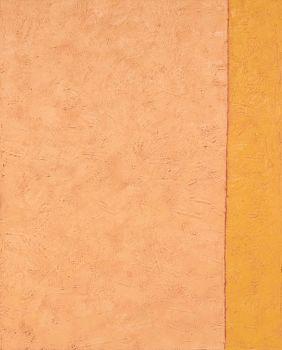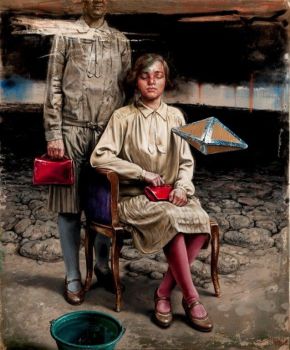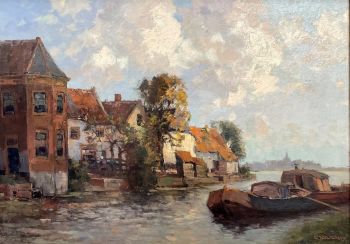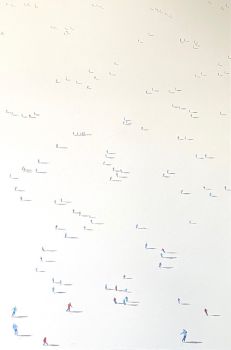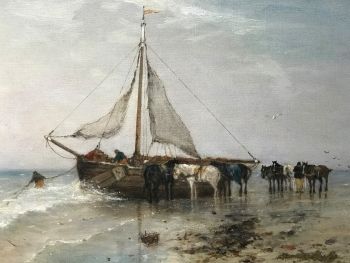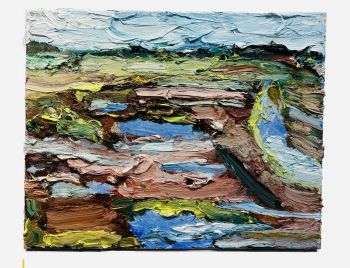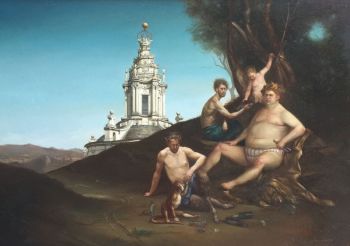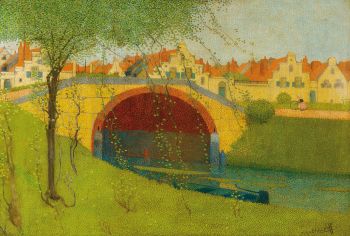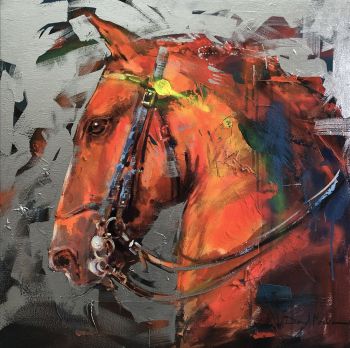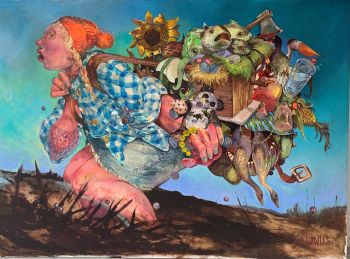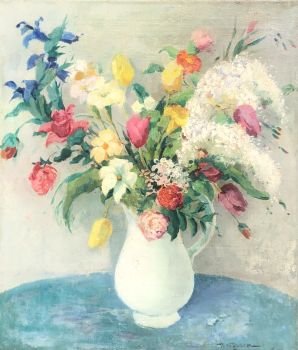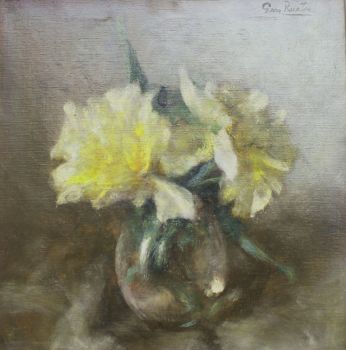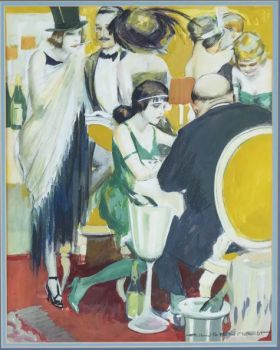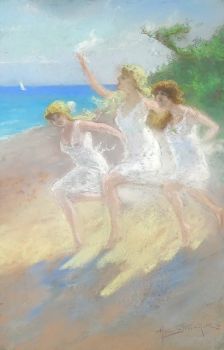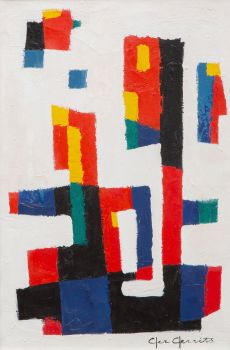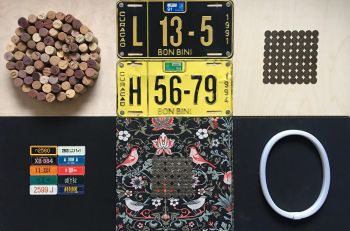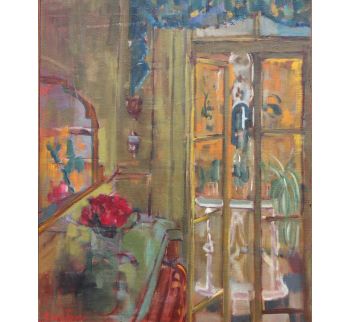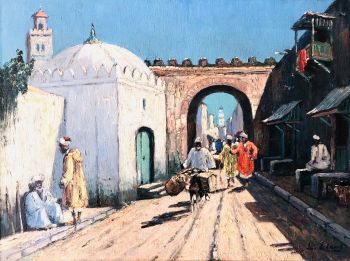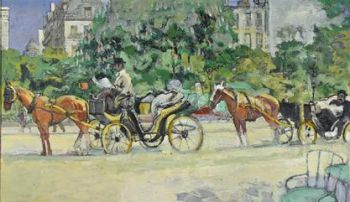Bibliotheek van meneer Cocoanuts 1994
Peter de Graaff
Óleo sobre tela original
198 ⨯ 270 ⨯ 4 cm
ConditionMint
Atualmente indisponível via Gallerease
Lyklema Fine Art
- Sobre artePeter de Graaff (Utrecht 1961)
"De Bibliotheek van meneer Cocoanuts"
Signed, titled & dated '94 on the reverse
oil on canvas 78* 106 inch (198 x 270 cm)
Framed 84*112 inch (214 x 284 cm)
Price is without transportation costs.
Peter de Graaff (1961) is a real artist and liked to experiment with his works. The interior plays an important part in his paintings. The starting point is often a photo of historic interiors that are used as a first draft. Layer by layer, he builds his painting so that the view from one layer to the other remains visible. The painterly interventions are equally diverse, playfull and and light-hearted. He exposed at Museum Voorlinden, Berger in Amsterdam (NL), Lecoutre in Knokke (B), Lorre , Dendermonde (B), Franken in Parijs & Reims (F) among others. This giant work is ‘the library of mister Coconut’. It fills the room with inspiration and imagination. - Sobre artista
Peter de Graaff (1961) é um pintor até o fim. Em sua busca pela pintura 'ultima', ele usa avidamente o vocabulário milenar da pintura.
Em suas pinturas recentes o prazer em pintar está visivelmente presente.
As pinturas se concentram nas figuras e no interior.
O ponto de partida são cópias editadas de fotos de personagens e interiores históricos que são usados como primeiro rascunho.
Ele então constrói seu trabalho de forma transparente; camada por camada, para que a vista de uma camada para a próxima permaneça visível.
“O esplendor das cores, a luz, a atemporalidade. Tudo parece rico e maravilhoso. Depois, há – literalmente – uma segunda, terceira e quarta camadas de imagem que remetem à história por trás dela, ao homem mesmo que ele esteja ausente da imagem. A última camada, tinta branca ou preta sombreada, garante que as cores subjacentes brilhem suavemente, mas não as cubram completamente. Você pode, se quiser, ficar na superfície ou pesquisar nas camadas.
É aí que está o outro lado. Essas camadas, os diferentes 'momentos' na pintura, movem-se através do tempo, por assim dizer, e se juntam na consciência do espectador para formar um todo, uma experiência.'
Você está interessado em comprar esta obra de arte?
Artwork details
Related artworks
Raoul Hynckes
Riverview with scaffolding (near Kinderdijk, the Netherlands)1913 - 1924
Preço em pedidoKunsthandel Pygmalion
1 - 4 / 24- 1 - 4 / 24
- 1 - 4 / 24
 Com curadoria de
Com curadoria deDanny Bree
1 - 4 / 12

